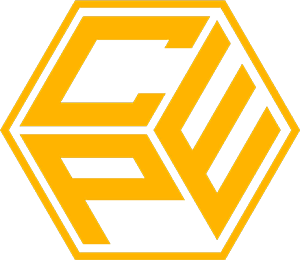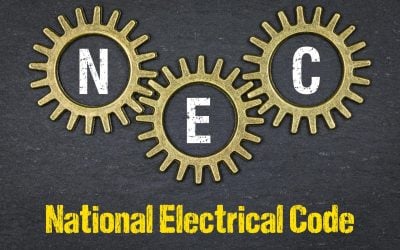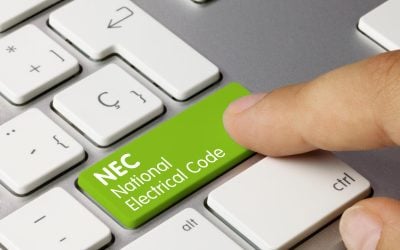Ugly’s Electrical References Free Exam
(Electrical) Test your knowledge of key concepts and industry standards
Are You Ready to Pass Your Electrical License Exam? Stop Worrying and Start Preparing
As a future licensed electrician, you know the NEC exam at PSI is a major milestone. But here’s what many candidates don’t realize – having the book isn’t enough. Success comes from knowing how to use it effectively under pressure.
Why Traditional Study Methods Fall Short: Most test-takers spend countless hours memorizing codes, only to freeze when faced with the actual exam format. They have the knowledge but lack the crucial exam navigation skills that make the difference between passing and failing.
Our Free NEC Practice Exam System Is Different: Unlike static study guides or expensive prep courses, our system replicates the exact PSI testing environment. With 75 authentic-style questions drawn from across the NEC, you’ll practice under the same time constraints you’ll face on exam day – 15 questions in 30 minutes.
What Makes This Your Best Preparation Option:
- Master Open-Book Strategy: Learn to quickly locate relevant code sections just like successful candidates from Texas to California do
- Build Time Management Skills: Perfect your pacing with unlimited free attempts, ensuring you can complete 15 questions confidently in 30 minutes
- Real-World Scenarios: Practice with questions that mirror actual PSI exam content, drawn from working electricians’ experience
- Adaptive Learning: Each practice test pulls different questions, keeping you sharp across all NEC topics
- Zero Risk: Unlike $200+ prep courses, our practice exams are completely free to take as many times as needed
From our experience helping electricians across the country prepare, we’ve seen how this focused practice approach consistently leads to passing scores. Just like John in Florida who went from struggling with time management to passing on his first attempt.
Ready to transform your exam preparation? Start your free practice test now and join the ranks of successfully licensed electricians who mastered the NEC exam through strategic practice.
Take your first practice exam today – it’s free, and you can retake it as many times as you need. Because when it comes to your electrical license, proper preparation isn’t just helpful – it’s essential.
Looking for more Electrical Practice?
Try our NFPA 70 Practice Exam.
Let us know what you think!
“Ugly’s Electrical References” is a compact and widely used reference guide for electricians, electrical engineers, and other professionals in the electrical industry. It provides essential information and quick access to key electrical data, including:
- Electrical formulas
- National Electrical Code (NEC) tables and references
- Conductor sizes and ampacities
- Conduit bending angles
- Voltage drops
- Electrical symbols and diagrams
- Safety guidelines and practices
The guide is named “Ugly’s” after its creator, George “Ugly” McGrath, who first published it in the 1970s. Over the years, it has become a go-to manual for many in the field because of its practicality and ease of use. The information is presented in a straightforward manner, making it an excellent tool for on-the-job use.

Are there ICC Tests that have questions from Ugly’s Electrical References?
Yes, there are ICC (International Code Council) tests that may include questions for which knowledge of Ugly’s Electrical References would be beneficial. The ICC offers a variety of certification exams for professionals in the building and construction industries, including several for electricians and related trades. While the ICC exams themselves do not specifically cite “Ugly’s Electrical References” as a required reference, many of the topics covered in Ugly’s, such as electrical formulas, the National Electrical Code (NEC), wiring standards, and safety practices, are relevant to these exams.
Some ICC exams where Ugly’s Electrical References might be particularly useful include:
-
Electrical Inspector (E1 Residential, E2 Commercial): These exams test the candidate’s knowledge of the NEC and electrical systems in residential and commercial settings. Ugly’s Electrical References provides a comprehensive overview of many NEC codes and electrical standards, making it a helpful study aid.
-
Electrical Plans Examiner (E3): This exam focuses on reviewing electrical plans for code compliance. Ugly’s can assist in understanding complex electrical standards and calculations that might be tested.
-
Residential Combination Inspector (B1, E1, P1, M1): This certification covers multiple trades, including electrical. Knowledge of electrical references from Ugly’s can be beneficial for the electrical portion of the exam.
-
Commercial Combination Inspector (B2, E2, P2, M2): Similar to the Residential Combination Inspector, this certification includes electrical systems, and Ugly’s provides valuable references for NEC and electrical concepts.
-
Permit Technician: While this exam is more general, it still requires knowledge of building codes, including the NEC for electrical permitting. Ugly’s can help provide a better understanding of electrical requirements that might appear on the test.
While Ugly’s Electrical References is not an official reference for ICC exams, its content aligns closely with many topics covered in these tests. Preparing for ICC exams with Ugly’s can help reinforce your understanding of electrical codes, safety standards, and calculations, which are often crucial for successful certification.
What are some Electrical Codes I would learn from Ugly’s Electrical References?
Ugly’s Electrical References provides a wealth of information on various electrical codes and standards that are essential for electricians, electrical engineers, and other professionals in the electrical industry. Here are some of the key electrical codes and topics you would learn from Ugly’s Electrical References:
1. National Electrical Code (NEC) Basics
- General Requirements: Understanding the fundamental principles outlined in the NEC, such as the purpose, scope, and application of the code.
- Definitions: Common electrical terms and definitions used throughout the NEC to ensure a clear understanding of code requirements.
2. Wiring Methods and Materials
- Conductor Types and Sizes: Information on different types of conductors (copper, aluminum, etc.), insulation types, and sizing based on NEC tables.
- Ampacity of Conductors: Tables and guidelines for determining the maximum current-carrying capacity of conductors, including adjustments for temperature and conduit fill.
- Wiring Methods: Standards for installing various wiring methods such as non-metallic sheathed cable (NM), armored cable (AC), conduit systems, and others.
3. Conduit Fill and Bending
- Conduit Fill Capacity: NEC tables and calculations to determine the number of conductors that can safely be installed in different types and sizes of conduit.
- Bending Radius and Techniques: Guidelines for bending conduits without damaging the conductors inside, ensuring compliance with NEC bend radius requirements.
4. Grounding and Bonding
- Grounding Requirements: NEC rules for proper grounding of electrical systems and equipment to prevent electric shock and equipment damage.
- Bonding Requirements: Information on bonding conductive materials to create a continuous electrical path, preventing voltage potential differences.
5. Overcurrent Protection
- Circuit Breakers and Fuses: NEC requirements for selecting and installing overcurrent protection devices based on circuit characteristics and equipment protection needs.
- Short Circuit and Ground Fault Protection: Standards for protecting circuits and equipment from short circuits and ground faults to enhance safety.
6. Voltage Drop Calculations
- Voltage Drop: Guidelines and formulas for calculating voltage drop in electrical circuits, ensuring that electrical equipment operates efficiently and safely.
7. Electrical Load Calculations
- Residential, Commercial, and Industrial Load Calculations: NEC methods for calculating electrical loads in different types of occupancies to ensure circuits and equipment are adequately sized.
- Service and Feeder Sizing: Determining the correct size for service entrance conductors and feeders based on calculated loads.
8. Panelboards and Distribution Equipment
- Panelboard Requirements: NEC rules for the installation, spacing, and accessibility of panelboards and distribution equipment.
- Clearance and Accessibility: Standards for maintaining safe working spaces around electrical equipment to prevent accidents and ensure compliance.
9. Special Occupancies and Equipment
- Hazardous Locations: NEC classifications and installation requirements for electrical equipment in hazardous (classified) locations.
- Swimming Pools, Spas, and Hot Tubs: Special requirements for electrical installations in areas where water is present to prevent electric shock hazards.
10. Electrical Safety and Best Practices
- Personal Protective Equipment (PPE): Guidelines for selecting and using PPE when working with or near electrical equipment.
- Lockout/Tagout Procedures: Standards for safely de-energizing equipment before maintenance to prevent accidental energization.
By studying Ugly’s Electrical References, you gain a practical understanding of these codes and standards, helping ensure compliance, safety, and efficiency in electrical work. The guide serves as a quick reference for field use, providing electricians and professionals with the information needed to adhere to the National Electrical Code and other industry standards.
Related To Electrical Exams
Florida Electrical Code 2020 Practice Exam
Florida Electrical Code 2020 Practice ExamPass your Florida Journeyman Exam with ConfidenceLet’s be honest—preparing for the Florida electrical exam can feel overwhelming. The pressure, the...
NEC 2023 Practice Test
NEC 2023 Practice ExamPass your Electrical License Exam with ConfidenceAre you preparing for your Electrical License Exam and Feeling overwhelmed by the complexity of the National Electrical...
NEC 2017 Practice Exam
NEC 2017 Practice ExamPass your NEC Exam with ConfidenceAre you finding yourself overwhelmed by the prospect of navigating the complex world of electrical licensing? You're not alone. Many...
ICC T16 Master Electrician Free Practice Exam
ICC T16 Master Electrician Free Practice ExamPass your Master Electrician Certification Exam with ConfidenceFeeling overwhelmed by the complexity of the ICC T16 Master Electrician exam? You're...
ICC T17 Certification Practice Exam
ICC T17 Journeyman Electrician Certification Practice ExamPass your ICC Electrical Certification Exam with ConfidencePreparing for the ICC T17 open-book exam? Don't just rely on the...
NFPA NEC 70 Practice Questions
NFPA 70 NEC 2020 Practice ExamPass your NFPA 70 Certification with ConfidenceElectrical safety isn’t just a requirement—it’s a lifesaving skill. The NFPA NEC 70 certification ensures you...
ICC G18 Residential Electrician Practice Exam
ICC G18 Residential Electrician Practice Exam(Colorado, Kansas, Missouri, Wyoming) ICC G18 Timed Practice ExamAre You Ready to Pass Your ICC G18 Electrical Exam? Transform Test Anxiety into Certification SuccessEvery aspiring ICC electrician faces...
ICC T16 Master Electrician Practice Exam
ICC T16 Master Electrician Practice Exam(Colorado, Kansas, Missouri, Wyoming) ICC T16 Timed Practice Exam Master Your ICC T16 Electrical Certification: Your Path to Success Feeling...







